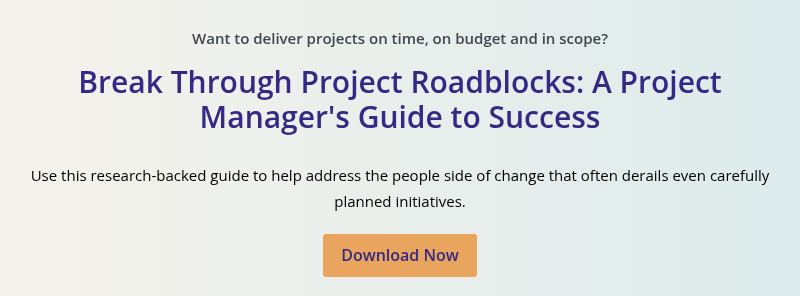Digital Transformation in the Insurance Industry: A Change Management Guide

10 Mins
Updated: August 7, 2025
Published: June 17, 2025

Digital transformation in the insurance industry isn’t a technology problem. It’s a people problem.
Insurers are under pressure to evolve. Customer expectations are changing. Regulatory demands are increasing. And new technology is constantly rewriting the rules.
But the real barrier to transformation isn’t the tools themselves—it’s getting people to adopt them.
Too often, companies invest in the system, but not in the strategy for helping people embrace it. Adoption can only happen when teams understand the purpose, feel equipped to make the shift, and are supported through the change.
This guide explores what’s at stake, why adoption remains the biggest hurdle, and how a human-first approach can turn digital ambition into real, lasting results.
Ready to lead change that sticks?
Understanding Digital Transformation in the Insurance Industry
To lead successful change, you first need to understand what digital transformation really means for insurance companies. Let’s explore what it involves, where it’s happening and why a people-focused approach is central to its success.
What is digital transformation in insurance?
Digital transformation for insurance companies is a continuous effort to modernize how insurers operate, deliver value and meet evolving customer expectations.
It spans core products, processes, customer service and business models. In 2025, 74% of insurers are prioritizing this shift, with technology adoption playing a key role. Momentum has been building over the last few years, with 96% of insurance CEOs saying the COVID pandemic accelerated digitization.
To succeed, insurers need a practical strategy for leading change, supporting adoption and making transformation stick.
Digital Transformation in the Insurance Industry

Core areas of digital change in insurance
Digital transformation in insurance stretches across the organization, driving change in several critical areas:
- Technology shifts – Cloud platforms, big data, AI and automation are fundamentally changing how insurers work and compete. Over the next three years, AI and data analytics alone are expected to account for nearly 50% of the industry’s digital investment budget.
- Operational models – Transformation often involves rethinking traditional structures, streamlining manual processes, reducing human error and modernizing how insurance services are delivered.
- Market dynamics – Shifting customer expectations are fueling demand for more personalized offerings, faster innovation, and greater agility across product development and delivery.
Sustaining these shifts and maintaining customer engagement requires a strong focus on helping your people to and adopt these new technologies.
The importance of a people-centric approach
Every digital initiative relies on people to bring it to life. Whether it’s adopting new systems, adjusting complex workflows or automating day-to-day tasks, employees are the ones who make change happen. If people don’t have the right support, progress stalls and adoption suffers.
A people-centric approach to change management in insurance, like the research-backed Prosci Methodology, focuses on preparing individuals for change, building their ability to adapt and sustaining change adoption.
Real transformation happens when people are engaged, equipped and supported. Let’s look at some examples of what this looks like in practice.
Examples of Digital Transformation in Insurance
Digital transformation in insurance is creating a significant shift, not just in the tools and technologies people use, but in how they do their work.
These real-world examples show why effective change management drives successful transformation.
AI-powered underwriting and claims automation
Artificial intelligence is transforming core insurance functions like underwriting and claims processes. These digital solutions accelerate insurance tasks and reduce manual effort. For example, Swiss Re introduced a Generative AI assistant to speed up underwriters’ access to crucial information.
Changes like this boost efficiency, but they also disrupt established processes. Change management helps people navigate the shift by building awareness of the “why” behind the change. It also provides training in new digital tools, assisting individuals to adapt to updated workflows and approaches.
This is a crucial component of effective transformation: Prosci research shows that 38% of AI adoption challenges stem from insufficient training in AI tools.
Top Challenges of Enterprise AI Adoption

Behavior-based pricing models
Usage-based insurance is changing how insurers evaluate risk and calculate premiums. Behavior-based models—like Discovery Insure’s Vitality Drive program—track policyholders' behavior and offer rewards or incentives for positive actions, such as safe driving.
Successful implementation of this type of model requires a clear change strategy to prepare employees for new tools, complex processes and customer interactions. This needs to be driven by clear communication, tailored skills training and reinforcement strategies to sustain outcomes.
Cloud-first customer experience platforms
Digital-first insurers are replacing outdated legacy systems with cloud-based platforms that support innovative solutions like mobile claims, omnichannel services and personalized experiences. For example, Allstate’s cloud-first strategy enabled enhanced mobile apps and a faster claims process, improving user experiences and customer satisfaction.
Strong change capability is essential to helping teams deliver consistent value as technologies evolve. As insurers modernize core systems and introduce new digital experiences, effective change management becomes critical to maintaining service quality. It helps leaders support their people through clear communication, targeted training and hands-on coaching, allowing them to confidently adopt new tools and digital processes.
Real-time customer portals and chat-based support
Digital-savvy customers demand a mobile-first experience that lets them manage policies, submit claims and resolve insurance issues at any time, from any location. To meet this expectation, Oscar Health built a mobile app that centralizes benefits tracking and support, empowering users to manage insurance from their mobile device.
For platforms like this to succeed, employees need to be prepared for and supported during the process. A structured change management approach equips customer-facing teams to support new digital touchpoints through clear role definitions, tailored training and ongoing guidance. This enables a smoother transition to the new technology and sustained adoption.
Privacy-first data governance models
As regulations grow more complex, companies in the insurance sector are rethinking how they manage sensitive customer data. Manulife, for example, has implemented a global privacy framework that adapts to the legal and regulatory requirements of each market it operates in. This approach enables the company to safeguard personal information across diverse jurisdictions, while supporting operational efficiency and customer trust.
A model like this affects the way teams access, share and protect information across borders. Change management plays a vital role in aligning people with new policies and practices. It helps build awareness of regulatory impacts and supports secure, consistent adoption across networks and regions.
Digital transformation is impacting every part of the insurance business. To understand why change capability matters, it’s important to know what it can offer—when done right.
Benefits of Digital Transformation in the Insurance Sector
A clear plan focused on people enables digital transformation to deliver measurable benefits. This leads to enhanced customer interactions, team collaboration, and decision-making across the business.
- Customer experience – Data-driven tools and automation enable faster service and personalized interactions.
- Operational efficiency – Streamlined digital processes lower operational costs and allow employees to focus on high-impact work.
- Data and risk management – Real-time insights strengthen underwriting, fraud detection and forecasting.
- Organizational agility – Digital systems support faster response to shifting demands and new regulations.
- Workforce enablement – Connected platforms improve collaboration, adaptability, and day-to-day decision-making.
While the advantages of successful digital transformation are clear, achieving them isn’t guaranteed. Many insurers face significant challenges that can impact momentum and put transformation efforts at risk.
Challenges of Digital Transformation and How Change Management Can Help
Digital transformation can present challenges for insurers, from legacy system constraints to a lack of skilled resources. A people-centric approach with structured change management helps you address these barriers early, before they disrupt progress.
A robust change management framework like the Prosci Methodology helps you to prepare for what’s ahead, manage the complexity of business transformation and build the capability for lasting change. According to the Prosci Best Practices in Change Management study, organizations that effectively manage change are 4.6 times more likely to stay on or ahead of schedule.

Cultural resistance
Deep-rooted habits and traditional mindsets often slow transformation efforts. In a fast-changing industry like insurance, employees can also feel fatigued by constant shifts and ongoing disruption.
Prosci research highlights that mid-level managers and front-line employees are the groups most likely to resist change. To overcome this resistance, it’s crucial to communicate clearly about what’s changing, help people connect with the purpose behind it, and consistently reinforce the benefits for individuals, teams, and the organization as a whole.
Most Resistant Groups to Change

Lack of skilled resources
Many insurers lack professionals fluent in both industry and emerging technologies. As digital tools transform core functions, upskilling is critical.
While training programs are necessary, effective change management is equally important to support employees, build confidence, and ensure new skills translate into lasting business transformation.
Integration of new technologies
Outdated legacy systems often hinder insurers by causing integration challenges that create silos and disrupt workflows.
A structured change management approach—with focused training, clear communication, and ongoing support—helps employees understand new systems, boosting adoption and turning integration into a driver of progress.
Regulatory compliance
Insurance is highly regulated, and emerging technologies like AI and predictive analytics add complexity. Compliance with laws like GDPR is vital to avoid penalties, reputational harm, and operational risks.
Change management embeds compliance from the start by integrating assessments and risk management into projects, aligning teams with regulations and building trust in data handling.
Cost constraints
Digital transformation requires significant investment in digital technology, training and change management. Demonstrating long-term value is essential—but proving the ROI of your digital endeavors can be challenging, especially when benefits take time to materialize.
A clear case for change, backed by strong leadership and consistent support, helps build commitment across the organization. Change management ensures people stay engaged throughout the journey, creating momentum and helping the business realize both short-term wins and long-term success.
Inadequate change management
A strong change management process is essential to keep employees engaged and prevent resistance during digital transformation. Without it, people can feel disconnected, leading to confusion, pushback and delays.
Frameworks like the Prosci Methodology offer structured approaches to ensure teams are prepared, equipped and supported at every stage. Prosci research shows that initiatives with excellent change management are seven times more likely to achieve their objectives.
Ultimately, when transformation prioritizes people and their experience, successful and lasting change follows.
Correlation of Change Management Effectiveness With Meeting Objectives

Why Change Management Is Key to Digital Transformation in the Insurance Industry
Challenges are an inevitable part of digital transformation. But effective change management provides the structure you need to overcome common obstacles.
Structured change management addresses the people side of change on an individual and enterprise-wide level, helping you deliver lasting results from your digital transformation.
Here are some ways a structured change management approach drives successful digital transformation in the insurance sector:
Facilitates employee engagement
Change management helps people understand the purpose behind digital transformation and their role in making it successful. This fosters a sense of ownership; when people understand the “why”, they’re more likely to commit. Early involvement also reduces employee uncertainty and creates space for open dialogue.
A leading global insurer took this approach, partnering with Prosci to support a large-scale digital transformation. By embedding change capability, they aligned the workforce, strengthened adoption, and created the conditions for long-term success.
Aligns technology with people's needs
New technologies often mean new workflows and expectations. And these may require new skills. Without support, this can create confusion and pushback.
Prosci research shows that 38% of digital adoption challenges stem from insufficient training. Change management helps bridge the gap by aligning transformation efforts with employee needs. Training programs also play a key role by building the skills employees need to use new tools with confidence and clarity. Together, these efforts create a smoother transition, stronger long-term results, and employees who adapt and thrive.
Enhances communication
Clear, consistent communication is essential during digital transformation. Without it, people’s fears and uncertainties about change can quickly turn into resistance.
Change management prioritizes clear messaging and communication plans to inform and prepare people for what lies ahead. And communication goes both ways. Open feedback loops provide space to raise concerns, ask questions and share insights. This ongoing dialogue helps leaders stay connected to the workforce and allows them to adjust their approach to better support their people throughout the transition.
Increases adoption and utilization
Adoption is the driving force behind successful digital transformation.
Effective change management provides a structured way to support individuals through the change, helping employees transition with confidence. One widely used approach is the Prosci ADKAR® Model, which focuses on guiding people to embrace and sustain new ways of working.
Prosci ADKAR Model

Supports organizational culture
A strong change culture is built on integrated practices. When change management is embedded into daily operations, it reinforces a mindset that views change as part of how the organization grows.
Leadership alignment plays a central role. When leaders actively support and model desired behaviors, they build credibility and set clear expectations. Over time, these efforts create a culture that is more adaptive, resilient and positioned to take advantage of future transformation opportunities.
Building a change-ready culture is essential for successful digital transformation. To do that, you need a structured approach that puts people at the center.
Applying Change Management to Digital Transformation: A Guide for the Insurance Industry
Change management turns digital transformation from a purely technical rollout into a people-driven development. Here’s how insurers can embed change capability into every phase of transformation and deliver better outcomes.
Understand the need for change
- Identify drivers – Pinpoint the external and internal forces behind the transformation. Regulatory updates, shifting customer expectations and growing competition from InsurTech firms are common indicators of the need for change. Understanding these drivers builds urgency and focus across the organization.
- Define success – Establish clear, measurable outcomes for the initiative. This could include faster service delivery, increased operational efficiency or stronger data capabilities. A shared definition of success keeps teams focused and reinforces the purpose behind each phase of the transformation.
Engage stakeholders
- Build a coalition – Establish a sponsor coalition made up of influential leaders and key stakeholders. They play a critical role in championing the transformation, reinforcing messaging and modeling commitment across the organization.
- Communicate effectively – Create a structured communications plan that reaches impacted groups through the right channels. Focus on the reasons behind the change, the expected benefits, and how it will affect people’s work. Clear, consistent communication builds awareness, strengthens alignment and sets the tone for what lies ahead.
Aim to engage those impacted by the change sooner rather than later. In our Best Practices in Change Management research, respondents ranked starting communication efforts earlier in the project as the third most important change they would make in future initiatives.
Utilize the Prosci ADKAR Model
Our ADKAR Model provides a proven framework for supporting individual change during digital transformation:
- Awareness – Help employees understand why the transformation is happening and what’s driving it.
- Desire – Create motivation to engage with the change through involvement, transparency, and leadership support.
- Knowledge – Offer targeted training and resources to build skills and capability.
- Ability – Provide coaching and practice opportunities to apply new skills.
- Reinforcement: Implement mechanisms to sustain change, like recognition programs.
Monitor and adapt
- Track progress – Use our ADKAR Model to assess how individuals are progressing through the change and where they may need additional support.
- Adapt strategies – Adjust your approach based on real-time feedback and assessment results to maintain engagement and momentum.
As one participant in Prosci’s Applications of ADKAR study explained, “ADKAR allows you to measure where individuals are in the change process so change management activities can be tailored and timely.”

Sustain outcomes
- Review performance – Once the transformation is in place, evaluate outcomes against defined goals. Identify what worked, where gaps remain and how the organization can continue to improve.
- Transfer ownership – Support leaders in taking full ownership of sustaining the change. This reinforces accountability and helps embed a culture of continuous improvement.
A major insurer partnered with Prosci to embed change capability across the organization. This structured approach to change management enabled leaders to sustain results and support a growing volume of transformation initiatives.
Together, these steps help insurers embed change capability into digital transformation, from early planning through long-term adoption. What follows is the impact that capability can deliver.
Building Change Capability for Lasting Impact
Digital transformation is powered by people. Its success depends on how well they adapt to new ways of working and sustain them over time.
Technical upgrades will only take you so far. Overcoming the challenges of digital transformation takes a commitment to building change capability across the organization. The Prosci Methodology helps insurers prepare their employees, align their teams and maintain progress long after implementation.
When change becomes a core skill, people drive it. That’s how insurers embed transformation into how they work—building capability that grows with the business.




